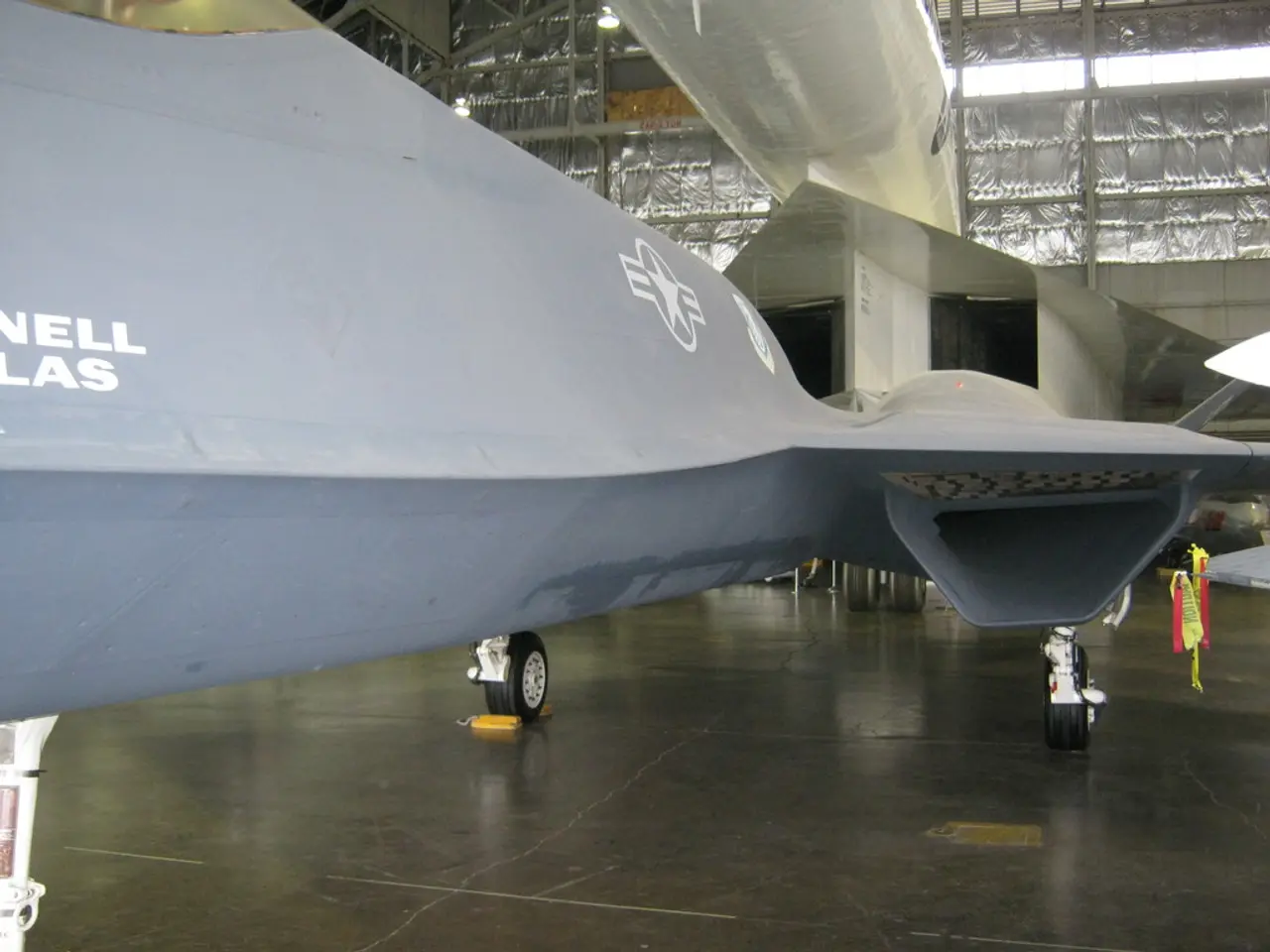Ease your flight anxiety with these practical solutions
Flying can be a nerve-wracking experience for many, but with the right strategies, you can manage your anxiety and enjoy a smoother journey. Here are some effective methods to help you stay calm and in control during your next flight.
Breathing Exercises
One of the most recommended techniques is box breathing. This involves inhaling for four seconds, holding your breath for four seconds, exhaling for four seconds, and holding again for four seconds. This simple exercise can help regulate your nervous system and reduce anxiety symptoms, especially during turbulence [2][3][5].
Another breathing method that can activate the body's relaxation response is the 4-7-8 technique. This involves inhaling for four seconds, holding your breath for seven seconds, exhaling for eight seconds, and repeating the process [4].
Grounding Methods
Focusing on sensory input can also help shift your attention away from anxious thoughts. The 5-4-3-2-1 technique, for example, encourages you to notice five things you see, four you feel, three you hear, two you smell, and one you taste. This exercise can ground you in the present moment [1][4].
Visualization
Mentally rehearsing a successful and calm flight, or picturing a safe and relaxing place, can diminish worries and build psychological resilience [3][4]. Visualization can be a powerful tool in managing your anxiety.
Distractions
Engaging with audiobooks, movies, or puzzles during the flight can divert your focus from anxiety-inducing sensations like turbulence [2].
Communication with Flight Crew
Informing attendants about your anxiety enables them to provide reassurance and support during the flight [2]. Don't hesitate to ask questions or seek help if you need it.
Expressive Journaling
Writing about your fears and positive travel experiences can lessen anxiety intensity and reinforce happy memories [1][5]. Consider keeping a travel journal to document your experiences.
Professional Support
Cognitive Behavioral Therapy (CBT) and talk therapy are effective long-term methods to manage fear of flying. These often involve exposure exercises that build confidence and reduce avoidance [1][3]. If your anxiety is severe, consider consulting a therapist who specializes in flying fears.
Other Tips
A quick stretch or a stroll around the plane can release tension and reset your body during flight. Packing comfort items such as noise-cancelling headphones, a cozy neck pillow, and favorite media can help create a sanctuary during your flight.
Remember, commercial aviation is one of the most heavily regulated and safest industries in the world. Weird sounds during a flight are usually part of the process. Turbulence does not mean danger for planes.
Booking non-stop flights can reduce stress, and starting with short flights can help build your confidence. Sitting near the front of the plane can make the flight feel quieter and smoother.
In case of unusual experiences during a flight, flight attendants can provide reassurance. If you need real-time assistance or help during a delay, the [website app] is available 24/7. The 5-4-3-2-1 trick can also distract your brain from spiraling during flight.
Familiarity with flying often leads to comfort: "Flights take off. Turbulence passes. You land safely. Repeat." Reframing common flying fears can help ease nerves: "This is a normal part of flying. The crew isn't worried, so I don't need to be either."
Flight anxiety affects millions of travelers, including frequent fliers. Around 15-40% of American adults experience some level of nervousness or fear when flying [6]. But with the right strategies, you can overcome these fears and enjoy your journey.
[1] Mayo Clinic. (2021). Overcoming flight anxiety: Tips for a calm flight. Retrieved from https://www.mayoclinic.org/diseases-conditions/anxiety/in-depth/fear-of-flying/art-20047693
[2] Healthline. (2021). 11 ways to cope with flight anxiety. Retrieved from https://www.healthline.com/health/coping-with-flight-anxiety
[3] WebMD. (2021). How to Overcome a Fear of Flying. Retrieved from https://www.webmd.com/mental-health/feature/how-to-overcome-a-fear-of-flying
[4] Psychology Today. (2021). How to Overcome Fear of Flying. Retrieved from https://www.psychologytoday.com/us/blog/anxiety-and-the-brain/201405/how-overcome-fear-flying
[5] Anxiety and Depression Association of America. (2021). Fear of Flying. Retrieved from https://adaa.org/understanding-anxiety/specific-phobias/fear-flying
[6] Anxiety and Depression Association of America. (2021). Fear of Flying Statistics. Retrieved from https://adaa.org/finding-help/programs/adaa-helpline/adaa-helpline-fear-flying-statistics
- Box breathing and the 4-7-8 technique are two breathing exercises that can help reduce anxiety symptoms during flights, especially during turbulence.
- Focusing on sensory input using the 5-4-3-2-1 technique can help shift your attention away from anxious thoughts, grounding you in the present moment.
- Mentally rehearsing a successful and calm flight or picturing a safe and relaxing place can diminish worries and build psychological resilience.
- Informing flight attendants about your anxiety enables them to provide reassurance and support during the flight, and the 5-4-3-2-1 trick can also distract your brain from spiraling during flight.




